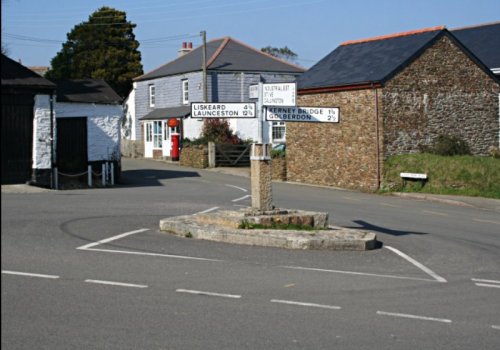


Historical Moorland Village
A large village on the edge of Bodmin Moor four miles north of Liskeard.
The original small settlement grew quickly during the nineteenth century in response to industrial activity on the moorland north and west of the village. Originally built as local housing for the many nearby mines. There is a Church of England chapel of St. John in the village. A United Methodist Church was built in 1861 on Fore Street. The population of the village was 2,205 at the 2011 census.
The village centre is about a mile from the edge of Bodmin Moor across the B3254 road. At Caradon Hill, there is a large mast for the transmission for TV signals to the area. Caradon Hill is heavy with ancient mineshafts and engine houses. The hill was once famous for its copper mines but these are now closed. The South Caradon Copper Mine, half a mile to the south-west of the transmitter, was the biggest copper mine in the UK in the second half of the 19th century.
Pensilva is not generally considered a destination for tourists although nearby Minions has some historical attractions.
Fore Down is a large area of common land at the south-east corner of Caradon Hill just above Pensilva. The views are amazing from here, on a clear day you can see to the coast from Plymouth to St. Austell. The B3254 road to the south goes to Liskeard and the road to the west goes to Crows Nest on the edge of Bodmin Moor.
The local pub is the Victoria Inn, which closed permanently in 2022. There is one general-grocery shop in the middle of the village.
The Millennium House in Pensilva is a community owned social centre built in 1999. Over the years it has waxed and waned in popularity and the incumbent small bar has changed from a club to a pub in that time. It is the location of the part-time Post Office and a volunteer-run café is open during PO hours.
Bodmin Moor Liskeard St. Cleer Callington
The Caradon Trail Linkinhorne